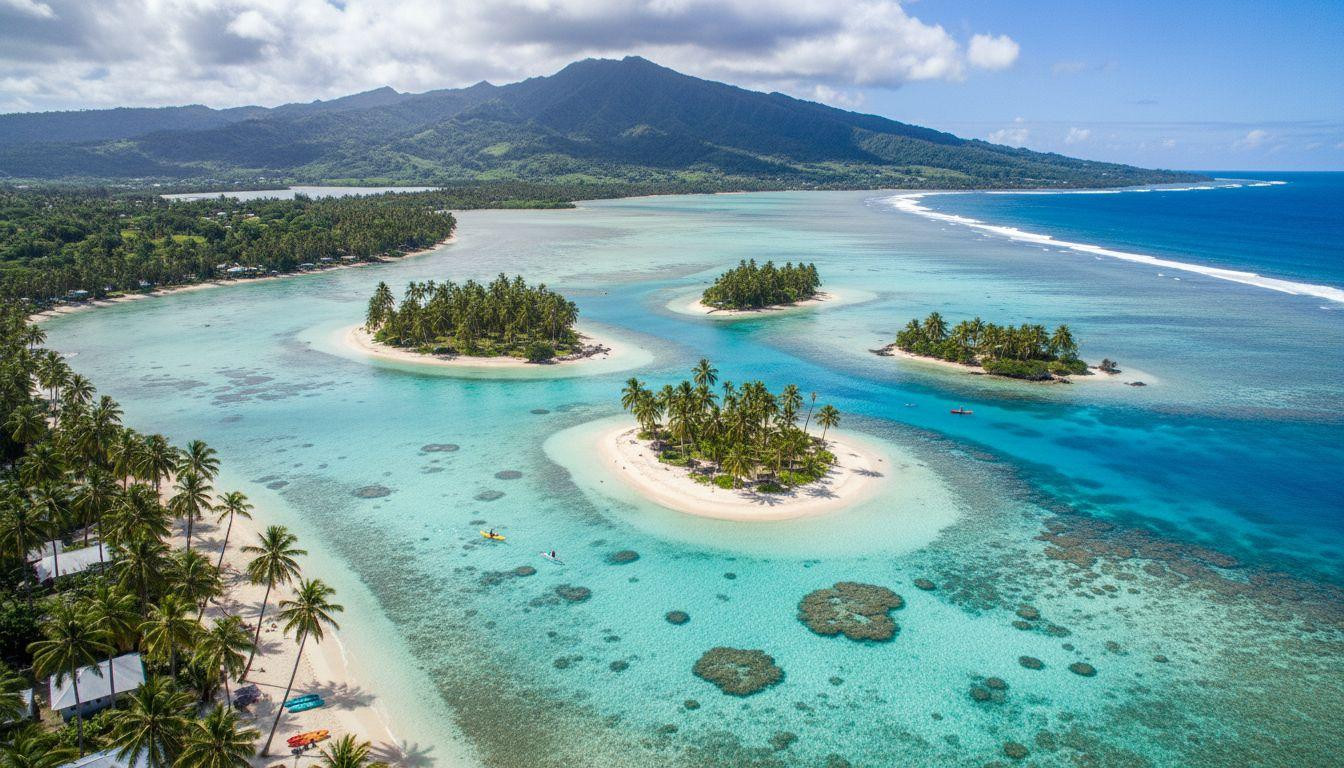The shallow turquoise waters of Muri Lagoon stretch like liquid glass under the Cook Islands sun. Four small motus (islets) dot this protected lagoon on Rarotonga’s southeastern coast. While the Maldives crowds 1.49 million tourists into shrinking coral atolls, this volcanic paradise welcomes just 135,000 visitors annually.
Morning light reveals coral gardens beneath crystal-clear water. You can walk across much of the lagoon at low tide. The volcanic peaks of Rarotonga rise behind palm-fringed shores, creating a backdrop the flat Maldives cannot match.
Why the Maldives has lost its magic
The numbers tell a sobering story about paradise under pressure. The Maldives welcomed 1.49 million visitors by August 2025, averaging 6,100 tourists daily across 1,230 establishments. Resort rooms start at $800 nightly and climb past $3,000 for luxury villas.
Climate science paints an even starker picture. These low-lying coral atolls average just 5 feet above sea level. The IPCC projects 77-90% of habitable land will disappear by 2100 under current sea level rise scenarios.
Meanwhile, resort construction continues at breakneck pace. Fifteen new resorts opened in 2025 alone, adding 1,649 rooms to an already saturated market. The authentic Maldivian culture remains largely inaccessible to tourists, confined to designated “local islands” with strict visiting restrictions.
Meet Rarotonga’s overlooked treasure
Muri Lagoon offers everything the Maldives promises without the crowds or climate anxiety. This shallow coral lagoon spans several square kilometers along Rarotonga’s southeastern shore. Four motus create natural swimming pools and snorkeling spots accessible by kayak or short swim.
The volcanic advantage
Rarotonga’s volcanic foundation rises 2,159 feet above sea level at Te Manga peak. The Muri Lagoon area sits 15-30 feet above current sea levels, providing natural protection against rising oceans. This geological stability means your investment in Cook Islands memories won’t vanish beneath the waves.
Authentic Polynesian culture
Unlike the Maldives’ resort-isolated experience, Muri connects you directly with Cook Islands culture. The annual Te Maeva Nui festival celebrates Polynesian heritage each August with traditional dance, music, and crafts. Local villages like Ngatangiia and Aroa sit within walking distance of lagoon accommodations.
The Muri Lagoon experience
Water temperature hovers around 78-80°F year-round in the protected lagoon. Visibility reaches 80-100 feet on calm mornings before 10 AM. The shallow depth (3-15 feet in most areas) makes snorkeling accessible for beginners and children.
Water activities without the premium
Many accommodations include complimentary kayaks and stand-up paddleboards. Glass-bottom boat tours cost $50-80 per person compared to $100-150 in the Maldives. The four motus offer secluded beaches and excellent snorkeling with green sea turtles, parrotfish, and angelfish.
A 20-mile motorcycle loop around Rarotonga takes 2-3 hours, passing waterfalls, villages, and mountain viewpoints. This cultural immersion remains impossible in the resort-dominated Maldives.
Authentic island dining
Local restaurants comprise 60% of Muri area dining options. Try ika mata (lime-cured raw fish with coconut cream) for $12-18. Fresh seafood meals average $25-35 compared to $75-100 at Maldivian resorts. The Saturday Punanga Nui Market in nearby Avarua showcases local crafts, tropical fruits, and traditional foods.
Smart economics and logistics
Accommodation costs 50-70% less than comparable Maldivian resorts. Muri Lagoon Lodge offers rooms from $75 nightly, while luxury villas start around $450. Budget travelers can explore for $85-110 daily versus $175-225 in the Maldives.
Rarotonga International Airport (RAR) sits just 6 miles from Muri Lagoon, a 15-20 minute drive. Direct flights from Los Angeles take 8 hours 15 minutes with connections through Auckland. The Maldives requires 22+ hours with multiple connections and costs $700-1,100 more roundtrip from major US cities.
October through November provides optimal conditions with calm seas, 77-81°F temperatures, and fewer tourists than peak season. US citizens enter visa-free for 31 days, extendable to six months.
Your questions about Muri Lagoon answered
What’s the best time to visit for calm water?
October and November offer the calmest lagoon conditions with trade winds under 10 knots most mornings. Water temperature stays around 78°F, perfect for extended swimming and snorkeling. This shoulder season also brings 40% fewer tourists than July-August peak season.
How does Polynesian culture compare to Maldivian?
Cook Islands culture remains accessible and authentic, with locals encouraging visitor participation in festivals, markets, and daily life. The Maldives maintains strict separation between tourist resorts and local communities. Traditional Polynesian arts like tivaevae quilting and wood carving are practiced openly, not just displayed for tourists.
Why choose volcanic islands over coral atolls?
Volcanic islands offer geographic diversity impossible on flat atolls. Rarotonga combines lagoon snorkeling with mountain hiking, waterfall swimming, and cultural villages. The volcanic foundation provides geological stability and protection from sea level rise that coral atolls lack. This means sustainable tourism for decades to come.
Morning mist lifts from Te Manga peak as the first kayakers paddle toward distant motus. The lagoon mirrors volcanic ridges and coconut palms in perfect stillness. This is paradise without the crowds, climate guilt, or crushing costs.
